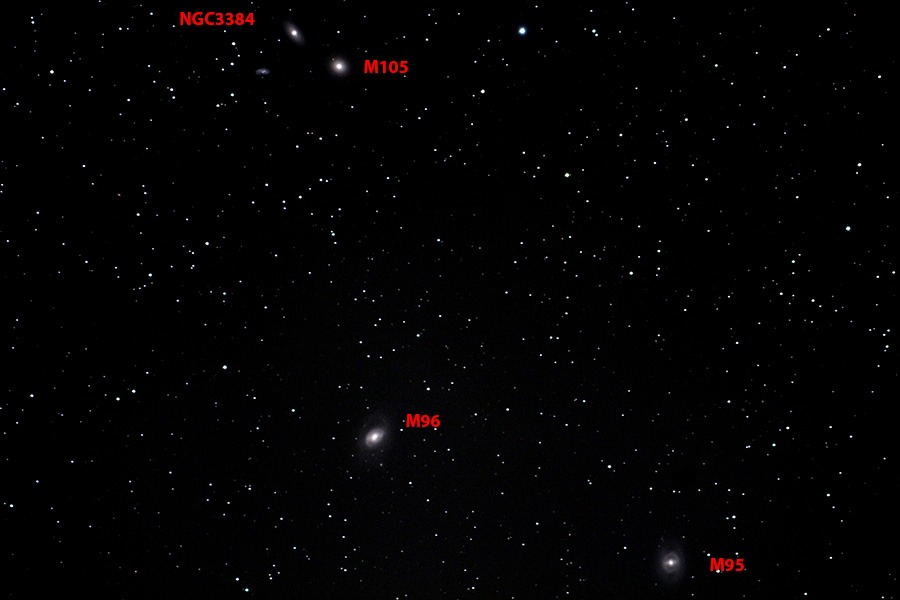
M96 M95 M105 Leo Grouping
M96 M95 M105 Leo Grouping
M95 Messier 95, also known as M95 or NGC 3351, is a barred spiral galaxy about 33 million light-years away in the zodiac constellation Leo. It was discovered by Pierre Méchain in 1781, and catalogued by compatriot Charles Messier four days later. In 2012 its most recent supernova was discovered.
Thank you for reading this post, don't forget to subscribe!
M96 Messier 96 (also known as M96 or NGC 3368) is an intermediate spiral galaxy about 31 million light-years away in the constellation Leo. It was discovered by French astronomer Pierre Méchain in 1781. After communicating his finding, French astronomer Charles Messier confirmed the finding four days later and added it to his catalogue of nebulous objects. Finding this object is burdensome with large binoculars. Ideal minimum resolution, in a good sky, is via a telescope of 25.4 cm (10.0 in) aperture, to reveal its three-by-five-arcminute halo with a brighter core region.
This complex galaxy is inclined by an angle of about 53° to the line of sight from the Earth, which is oriented at a position angle of 172°.
M105 Messier 105 or M105, also known as NGC 3379, is an elliptical galaxy 36.6 million light-years away in the equatorial constellation of Leo. It is the biggest elliptical galaxy in the Messier catalogue that is not in the Virgo cluster. It was discovered by Pierre Méchain in 1781, just a few days after he discovered the nearby galaxies Messier 95 and Messier 96. This galaxy is one of a few not object-verified by Messier so omitted in the editions of his Catalogue of his era. It was appended when Helen S. Hogg found a letter by Méchain locating and describing this object which matched those aspects under its first-published name, NGC 3379.
NGC3384
NGC 3384 is an elliptical galaxy in the constellation Leo. The galaxy was discovered by William Herschel in 1784 as part of the Herschel 400 Catalogue. The high age of the stars in the central region of NGC 3384 was confirmed after analysis of their color. More than 80% were found to be Population II stars which are over a billion years old. The supermassive black hole at the core has a mass of 1.6+0.1
−0.2×107 M☉.
Personal reflections and information
This group is located just below the “Belly” of Leo. With a sharp eye you may also notice another small spiral galaxy just below NGC 3384, this is NGC 3389.
| Observation Log Information | |
|---|---|
| Log Index: | 1072 |
| Session: | 270 |
| Date: | 2015-04-19 |
| Equipment: | 110mmDoublet EP APO – PF Canon 60D |
| Location: | ABWCO |
Keywords: M96 M95 M105 Leo Grouping, Messiers, Leo, Galaxy